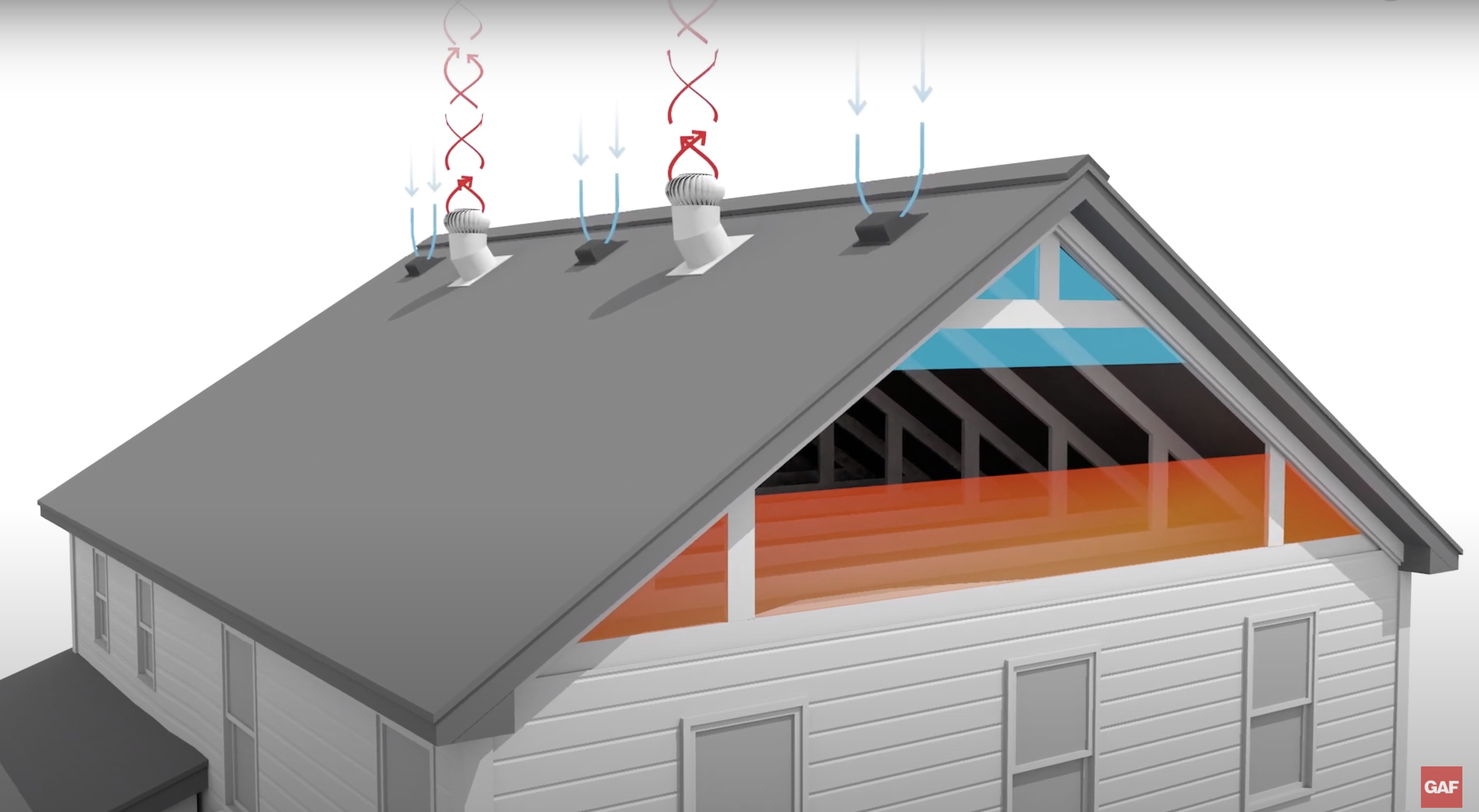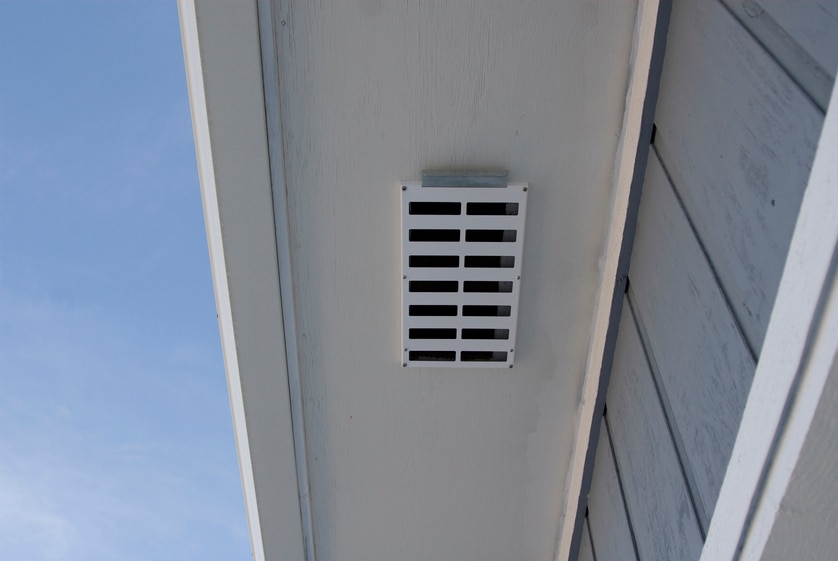Los respiraderos de techo constituyen la base del sistema de ventilación para ático de una casa, lo que ayuda a que "respire" mientras evita que el sistema de techo se dañe todo el año. Por eso es importante comprender cómo funcionan juntos los distintos componentes para crear un sistema de ventilación para ático equilibrado y efectivo.
Here are five of the most common ventilation installation mistakes—as well as how to avoid them.
1. Placing Intake Vents Too High or Exhaust Vents Too Low
A balanced attic ventilation system draws in fresh, cool air at the lowest part of the attic space and exhausts warm, moist air at the highest point. If either of these vents are placed incorrectly, they reduce the entire attic space's exposure to continuous air flow, reducing the overall system's effectiveness.
If an exhaust vent is placed too low on the roof, or if two exhaust vents are stacked, one of the vents might then act as intake and disrupt—or short-circuit—the airflow through the entire attic space, reducing how effective it can be.
Make sure that the intake vent is placed at the lowest possible point of the roof (usually at or near the soffits) so that it lines up with the lowest part of the attic space. Exhaust vents should always be placed at the highest possible point on the roof (at or near the ridge) which typically aligns with the highest part of the attic space.
2. Mixing Exhaust Products within the Same Attic Space
Installing two or more different types of exhaust vents within the same attic space can also short-circuit proper airflow. When this happens, some of the exhaust vents may act as intake vents, restricting airflow to only the part of the attic space underneath those exhaust vents. Mixing exhaust products could also allow weather or debris to infiltrate the home.

If the wrong type of vent for a specific roof design is installed, that can lead to mixing products. When a ridge vent is installed on a hip roof with very little ridge line, for example, it may not provide enough exhaust for the attic space. When this happens, another exhaust fan such as a roof louver or a power vent will be added to boost the ridge vent. However, doing this can lead to problems.
A best practice is to install one type of exhaust vent on the attic space that is able to meet the exhaust NFVA (net free ventilating area) requirements, allowing the air to flow continuously throughout that attic space.
3. Cutting the Ridge Vent Opening Too Long
Sometimes, a ridge vent might be installed across the entire ridge because it looks good, but there's no need to cut open the entire ridge air slot below the vent. Cutting an opening that's too long could lead to too much exhaust, disrupting the balance of the entire ventilation system.
Check that the opening of the ridge air slot matches the amount of exhaust NFVA required for a specific attic space. For example, if an attic space requires 288 square inches of exhaust and you're using a 4-foot plastic ridge vent with 18 sq. in. per lineal foot of NFVA, then only 16 ft. of the 40-ft. ridge should be cut open.
Always open the ridge air slot according to the required exhaust NFVA for the attic space, and then balance that with the same amount of intake NFVA.
4. Clogged or Blocked Intake Vents
Even when intake vents were correctly installed, they may become ineffective over time if the outside portion becomes clogged with paint, dirt, dust, or even spiderwebs. Vents may also get blocked from the inside if the attic insulation is installed over the vents.

Keep the intake vents clean by removing any debris that may have accumulated over time. If necessary, use attic baffles to keep insulation away from the intake vents. Don't forget to check that a hole has been properly cut in the soffits to allow air to enter the intake vents.
5. Having Missing or Inadequate Intake
Intake is arguably the most important part of an attic ventilation system. When there is inadequate intake-or none at all-an exhaust vent may not function properly.
Static exhaust vents like ridge vents or roof louvers hinge on adequate intake, but the same also goes for powered exhaust vents, which will have to work too hard to pull air through the attic space, resulting in the premature failure of the power vent's motor.
Always check that you have a balanced attic ventilation system with the proper amount of intake and exhaust ventilation for the attic space being ventilated.
For more information and tools to calculate the amount of ventilation products needed for your attic roof vents, visit gaf.com/ventcalculator.

